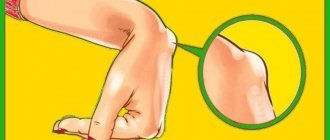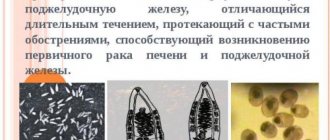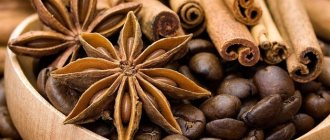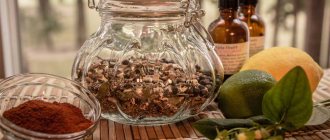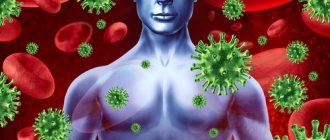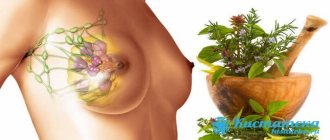Soft tissue sarcoma - what is it?
Sarcoma is a malignant tumor that can affect any tissue in the body. If the process develops in connective (muscles, tendons and joints) and nervous tissue, they speak of soft tissue sarcoma. Tumor development begins with a mutation in the progenitor cells of these tissues.
Normally, precursor cells divide a certain number of times and then specialize, that is, they turn directly into nerve, muscle, joint and ligament cells, which perform their function and no longer divide. But if a certain mutation occurs in the precursor cell, such a cell begins to divide uncontrollably and without stopping, and a tumor appears.
As the tumor grows, it can metastasize. In this case, the degenerated cell or cells are transported with the blood or lymph flow and settle in the lymph nodes or soft tissues of the body, forming a new focus of sarcoma.
Since there are several types of soft tissues, their tumors also differ in a number of indicators. Thus, it is appropriate to talk about a group of soft tissue sarcomas that differ in cell structure, growth rate, localization, ability to metastasize, sensitivity to therapy, including folk remedies, and frequency of occurrence.
Reasons why soft tissue sarcoma appears
Soft tissue sarcoma most often develops in people aged 40–50 years, but can also develop in children aged 5–6 years and adolescents. This type of disease accounts for about 6.6% of all childhood cancers. In general, malignant processes in soft tissues are a fairly rare type of cancer (about 1% of all cancer patients).
Unfortunately, to date, the causes of soft tissue sarcoma have not been precisely established. There are certain risk factors against which pathology may develop:
- genetic predisposition.
- exposure to toxic substances, mutagens, carcinogens on the body.
- effects of radiation on the body.
Often the disease develops in people who work for a long time or live in constant contact with harmful chemicals: aniline dyes, chlorine, asbestos and others. If sarcoma develops in children, cell degeneration can occur even during the baby’s intrauterine development. Perhaps this can be facilitated by the negative toxic effects on a woman’s body during pregnancy.
Factors provoking the disease
Medicine does not know the exact reasons that provoke the disease. But like many other diseases, sarcoma occurs due to:
- Failure of the immune system.
- Prolonged exposure to ionizing rays.
- Genetic predisposition.
- Herpes viruses.
- Oversaturation of carcinogens in the human body.
INTERESTING fact: Medicinal properties of centaury
When the disease appears, the first symptom that appears is swelling. She is not painful and inactive. Most often, the disease affects the limbs, but it can also be found in the lungs and abdominal cavity, etc.
Symptoms of sarcoma
At the initial stages of tumor development, there are often no symptoms, but as it grows, characteristic signs begin to appear:
- A characteristic symptom of sarcoma is pain. Painful sensations bother a person in the area of tumor development; they are constant and can intensify at night.
- Over time, the tumor can be felt. On palpation the pain intensifies.
- Swelling of the tissue develops, in which a malignant neoplasm forms.
- There is a restriction in the mobility of the affected area of the body or limb.
- When nerve tissue is damaged, neurological symptoms develop: paresis and paralysis, pain, disruption of the innervation of certain organs.
- General symptoms of cancer develop: constantly elevated temperature, weight loss, weakness and fatigue.
It should also be taken into account that the symptoms of the disease depend on the location of the tumor and the extent of spread of metastases. The disease is manifested by impaired functioning of the part of the body that is affected.
Classification
There are several most common types of soft tissue sarcoma:
- rhabdomyosarcoma: classical and alveolar;
- Ewing's sarcoma, which affects soft tissue;
- peripheral primitive neuroectodermal tumor (PPNET);
- synovial sarcoma;
- malignant peripheral schwanoma (tumor of the nerve sheaths);
- fibromatosis;
- undifferentiated sarcoma is a group of tumors that are difficult to histologically classify.
The classification of tumors has been developed taking into account the structures that affect the malignant process, histological characteristics and characteristics of tumor growth.
A soft tissue tumor can develop in any part of the human body, since the tissues it affects are distributed everywhere. Often, a malignant neoplasm develops along the nerve or muscle membrane, ligaments, and blood vessels. The location of sarcoma depends on the type of tumor.
- Rhabdomyosarcoma can develop in different parts of the body: in the head, neck, urinary system and genitals, and limbs. Alveolar soft tissue sarcoma develops and metastasizes faster than classic sarcoma. In addition, this type of sarcoma is characterized by frequent relapse.
- Extraosseous Ewing sarcoma and PNET most often develop on the trunk and extremities. Tumors grow quickly and metastasize.
- Synovial sarcoma is predominantly located in the joints, but can also develop on the head and neck. Synovial sarcoma also grows quickly and spreads throughout the body.
- Peripheral schwanoma is a tumor of the nerve sheath that is most often localized in the lower extremities. The tumor metastasizes in approximately 50% of cases.
- Fibromatosis is a group of aggressively growing tumors that are located either in the anterior abdominal wall or in the area of the limbs, shoulder girdle, and pelvis. The peculiarity of the tumor is that, despite its rapid growth, it does not metastasize.
Bone sarcoma treatment with folk remedies
In the treatment of bone sarcoma, traditional medicine presented below has a good effect.
To prepare this product you will need kerosene and walnuts. Preparation:
- Take milky ripe nuts and place them in a small container. The container needs to be filled 2/3 with them.
- Fill the nuts with aviation kerosene to the very top.
- Infuse the mixture for three weeks, after which the liquid fraction should be drained, and the nuts should be squeezed out and strained.
The tincture is used exclusively for compresses. Do not take it orally under any circumstances.
Tincture from the root of this plant has antifungal, antimicrobial and analgesic effects. You can buy a ready-made tincture at a pharmacy, or you can prepare it yourself. To do this you need to do the following:
- Take 2 grams of aconite root and put it in a glass container.
- Pour 1 glass of vodka over the root.
Let the mixture sit for a week. This tincture is used internally and compresses are made from it. But since the plant is poisonous, it must be used with extreme caution.
This drug is used not only to treat sarcoma and many other types of cancer. Of course, the smell of the medicinal product leaves much to be desired. But what lengths will you go to for healing? You need to take 5 drops four times a day. The time intervals must be the same. For example, 9 -13-17-21 hours. The product is diluted in 50 ml. water. The course of treatment is 25 days, the break between courses is at least 10 days. During the break, it is recommended to take trichopolum.
During treatment with this option, it is recommended to completely avoid sugar and sweet foods. You need to start therapy with soda with 1/5 teaspoon. It is diluted in 100 grams of boiled water. This solution is drunk on an empty stomach. The amount of salt consumed in the solution can be gradually increased. But the dose should not exceed half a teaspoon.
Important. Whatever traditional medicine method you choose for treatment, consult your doctor before starting therapy.
A malignant tumor that forms from non-epithelial tissue is called sarcoma. In most cases, it affects bones, skin, and internal organs: lymph nodes, stomach, lungs. This is an extremely dangerous disease. The tumor grows quickly, in addition to which it destroys neighboring, healthy tissues and organs.
The insidiousness of sarcoma lies in the fact that even after seemingly successful therapy, the likelihood of relapse still remains high. It is for this reason that this disease ranks second in mortality among all cancer pathologies. The disease can affect the body of both an adult and a child, but more often it is diagnosed in people 25-30 years old.
Diagnosis of the disease
In diagnosis, it is important not only to accurately determine what type of tumor is developing, but also to identify its exact location, size, and the presence of metastases. The following methods are used to examine the patient:
- Magnetic resonance imaging;
- CT scan;
- X-ray examination;
- scintigraphic examination of the skeleton;
- bone marrow puncture (if the tumor has spread to the bone);
- ultrasonography;
- cytological examination of a tissue sample;
- laboratory blood test.
Treatment of soft tissue sarcoma
Traditional medicine offers aggressive methods of treating the disease: chemotherapy, radiation, surgery. Traditional medicine offers treatment with folk remedies as an alternative. This therapy does not cause side effects and does not have an aggressive negative effect on the human body. In this case, tumor development and the formation of metastases are inhibited. Therapy with folk remedies has a healing effect on overall health, strengthens the immune system and cleanses the body of toxic substances, which is very important in the fight against cancer. Also, such treatment will help alleviate the patient’s condition and reduce the manifestation of symptoms.
Folk medicines can be either for local use or for oral administration. The former act directly on the tumor site, inhibiting its development and relieving the symptoms of the disease. The latter have an antitumor effect, and also strengthen the immune system and cleanse the body.
Treatment with folk remedies for oral administration
- St. John's wort. Pour 50 g of crushed St. John's wort into 500 ml of grape vodka, leave for 2 weeks in a dark, warm place in a glass container, shake daily. Take 30 drops of tincture three times a day before meals.
- Aloe. 5 large leaves of a plant that is at least two years old are thoroughly washed, crushed and poured with 500 ml of vodka. Leave for two weeks in a dark, warm place in a glass container, shake regularly. Take 1 tbsp. l. drugs three times a day an hour before meals. If unpleasant side effects from treatment occur on the gastrointestinal tract (exacerbation of gastritis), you need to take a week's break and then continue therapy.
- Plantain. Grind 100 g of fresh plantain leaves, add 100 g of granulated sugar, mix and leave for two weeks. After this, squeeze out the plantain juice, which is stored in the refrigerator in a glass container. Use 1 tbsp. l. juice three times a day before meals.
- Sagebrush. The flowering plant is dug up by the roots, thoroughly washed and crushed. 1 tsp. vegetable raw materials are poured into 200 ml of boiling water and kept in a water bath until half of the liquid has evaporated. The finished drug is consumed 30 ml three times a day.
- Propolis. 100 g of propolis are crushed and poured with 500 ml of vodka, shaken for half an hour, then left to infuse in a warm, dark place for a week. After this, the tincture is filtered and 15 drops of the drug are consumed three times a day, half an hour before meals. The tincture can be diluted in a glass of water.
- Immortelle. Steam 4 tsp in 600 ml of boiling water. dried immortelle flower, leave for three hours, then filter. Drink 200 ml of infusion three times a day, half an hour before meals.
- Bindweed. 1 tbsp. l. crushed fresh herbs, pour 200 ml of boiling water, leave for 2 hours, then filter. Take 50 ml of the drug three times a day, a quarter of an hour before meals.
Local treatment with folk remedies
- Birch buds. 2 tbsp. l. crushed birch buds are poured into 100 ml of vodka and infused in a dark, warm place for two weeks, shaken daily. Gauze or cloth is soaked in the tincture and used as a lotion on the tumor site.
- Nightshade. The juice of the berries of this plant is soaked into gauze or cloth and used as a compress over the tumor site. The duration of the procedure is 3–4 hours. The compress is applied twice a week.
- Onion. Bake the onion in the peel, mash it warm and add 1 tbsp. l. birch tar. The mixture is wrapped in cotton cloth and applied to the tumor site. Keep the compress until the mass cools down.
- Corn flour. 1 kg of flour is poured into 1 liter of boiling water, mixed thoroughly, placed on a cotton cloth and applied to the sore spot. The compress is kept until the mixture has cooled. The procedure is repeated twice a day. This treatment has an analgesic effect.
- Grape. A paste of unripe grapes is applied to the tumor. Oak bark. 15 g of oak bark is poured into 1 liter of water, boiled over low heat for a quarter of an hour, left for 1 hour and filtered. Add 1 tbsp to the decoction. l. natural honey. The drug is stored in the refrigerator and used for compresses.
Causes of the disease
Modern medicine has identified the following factors as the main causes of the disease:
- Weak immune system
- Heredity
- The effect of ionizing rays on the body,
Sarcoma can also be caused by the accumulation of carcinogens in the body and the presence of certain types of herpes in the body.
To date, there is no reliable data on the cause of sarcoma. In most cases, this cancer develops without connection with any external factors. Sometimes the development or progression of sarcoma is preceded by exposure to chemical carcinogens or ionizing radiation on the human body. In addition, hereditary factors play a major role in the development of cancer, including sarcoma.
Signs of sarcoma
The clinical picture of sarcoma is largely determined by which organ or tissue is affected. The size and stage of the tumor are also important. More than half of sarcomas appear on the trunk and extremities, much less inside the chest and abdominal cavities, and extremely rarely on the head and neck.
The first manifestations of soft tissue sarcoma of the bones and trunk are the appearance of swelling, which is usually painless and inactive. The skin over the tumor is of normal color. Pain syndrome appears later, more often it is associated with the involvement of joints and nerve fibers in the process. The latter is typical for stage 2-4 sarcoma.
Osteogenic sarcoma, which also most often affects the extremities, is characterized by the early development of pain and dysfunction. Sarcoma arising from the connective tissue of the joint is especially difficult.
Signs of soft tissue sarcoma of internal organs largely depend on the stage, size and position of the tumor. Intestinal sarcoma is characterized by obstruction that increases with tumor growth. When the abdominal organs are affected by sarcoma, symptoms of pain appear due to compression of the nerve trunks. In the case of uterine sarcoma, spotting occurs outside of the menstrual cycle.
The organs of the chest cavity are affected by both the tumor itself and its metastases. With lung sarcoma, severe shortness of breath is observed. With the development of cancer in the mediastinum, not only respiratory disorders can be observed, but also impaired blood and lymph circulation due to compression and damage to the great vessels. Symptoms of organ dysfunction often appear with sarcoma; this occurs due to tissue replacement by a tumor.
Depending on the tissue in which the sarcoma begins to grow, sarcomas of bones (Ewing and osteogenic sarcoma) and soft tissues are distinguished. The latter are divided according to the affected organ:
- angiosarcoma – a tumor of the connective tissue of blood vessels;
- myosarcoma - a tumor of muscle tissue;
- lymphosarcoma and reticulosarcoma - an oncological disease of hematopoietic tissues;
- sarcoma of nervous tissue.
The diagnosis is made taking into account the primary tumor site. Stages of sarcoma are also distinguished, which are determined taking into account the size, degree of damage to the organ, surrounding tissues, lymph nodes and the presence of metastases.
Treatment of sarcoma
Oncology clinics use surgery, radiation treatment and chemotherapy. Most often, radical methods are used to treat sarcoma. Radiation treatment is used less frequently due to the low sensitivity of tumor cells to ionizing rays. Chemotherapy is usually carried out in combination with surgery. Methods and duration of treatment for sarcoma depend on the stage and location.
In the process of traditional treatment, the human body loses a lot of strength, so it is very important to help him overcome this illness. It is very useful to combine medical methods with traditional treatment for sarcoma.
There are many options for treating sarcoma with folk remedies. They have a direct effect on the tumor and also strengthen the body as a whole. For sarcoma, folk remedies are used both locally and internally.
Recipe. Tincture for resorption of osteogenic sarcoma. To prepare the tincture, you need to grind 50 g of St. John's wort herb, then mix the herb with 0.5 liters of grape vodka. Leave for two weeks, shake every day. When the tincture is ready, take 30 drops 3-4 times a day before meals.
Recipe. Tincture for the treatment of uterine sarcoma from aloe leaves. Aloe is very often used in the folk treatment of sarcoma, including uterine sarcoma. To prepare this tincture, you need to select four large, fleshy aloe leaves and chop them. Then pour 0.5 liters of vodka over the resulting slices and leave for two weeks, preferably in a warm place.
Recipe. Plantain balm for the treatment of lung sarcoma. Infusions, decoctions and poultices from plantain are used for many diseases; this plant is also effective for lung sarcoma. To prepare the balm, you need 100 g of chopped plantain and the same amount of granulated sugar. Mix these ingredients.
Recipe. Treatment of soft tissue sarcoma with chaga. For sarcoma, folk remedies are used quite widely and these are not only herbs, but also mushrooms, tar, and resins. To prepare chaga for the treatment of soft tissue sarcoma, you need to fill it with water at room temperature (not hot!) for 5-6 hours. Then the soaked chaga is ground in a meat grinder (save the water in which the chaga was soaked).
The resulting chaga puree is poured with water at room temperature in a ratio of 1 to 5. The chaga is infused for about two days. Then drain the water. The liquid is squeezed out of the sediment and diluted with the water that the chaga was filled with at the beginning. The resulting infusion is taken 2-3 glasses per day. When treating with chaga infusion, you should adhere to a plant-based diet - this will enhance the effect.
Recipe. Salad of herbs and flowers for the treatment of sarcoma. To prepare the salad, you need to thoroughly wash 100 g of fresh dandelion leaves, then pour salted water over them and leave for half an hour. After this, finely chop the dandelion leaves, 50 g of green onions and parsley. Add a little dill, two tablespoons of olive oil. Thanks to this salad, treating sarcoma with folk remedies can be not only healthy, but also tasty.
As mentioned above, for sarcoma, folk remedies can be used for local treatment.
Recipe. Infusion of birch buds for the treatment of soft tissue sarcoma of the extremities and trunk. To prepare the infusion, you need to pour two tablespoons of birch buds with 100 g of vodka. Infuse in a dark, cool place for two weeks, shaking the infusion every day. In the finished infusion, moisten gauze, folded several times, and apply lotions to the tumor.
Recipe. Patch for the treatment of soft tissue sarcoma. To make a plaster, you need to take 5 grams of mucus of wheat grains, lead white, incense and 7 grams of Armenian clay, aloe and printing clay. All this needs to be mixed. Add rose oil. Apply at night, do not wet.
Recipe. Dressings for resorption of sarcoma. It is best to make bandages for sarcoma from linen fabric. Soaking fabric with nightshade juice is very effective. Apply a bandage for 3-4 hours, then take a break of 5 hours and apply the bandage again.
Symptoms of pain and swelling at the site of the tumor often appear with sarcoma.
Recipe. Anesthetic for sarcoma. To prepare a mixture for local anesthesia, you need to bake the onion in the husk. After this, without waiting for it to cool, peel the onion and chop it. Then mix the resulting gruel with one tablespoon of birch tar. Place the resulting mixture in a gauze bag, which is applied to the tumor site. Keep until completely cool.
Recipe. Cottage cheese poultice for pain caused by sarcoma. Warm unsalted cottage cheese is sprinkled with sugar and attached with a bandage to the site of pain. This poultice is kept for about 2 hours.
Recipe. Compress for the treatment of myosarcoma. This compress not only helps stop the growth of the tumor, but also acts as a pain reliever. You need to take one kilogram of corn flour and add one liter of boiling water. You will get a liquid paste. Next, you need to take a linen cloth and lay the resulting pulp in an even layer on one side. This compress is applied for 1-2 hours. It is better to repeat this procedure several times a day.
If a tumor-like formation similar to a sarcoma appears, a photo of which can be viewed on the Internet, you should consult a doctor - an oncologist. Traditional treatment is very effective and sometimes works wonders, but for such a serious disease as sarcoma, complex treatment is necessary, including traditional medicine. Before using traditional medicine, you should also consult your doctor.
Forecast
Many people are interested in how long they live if sarcoma develops. Survival depends on the type of tumor, its characteristics, the stage at which the malignancy is detected, and the individual characteristics of the patient’s body.
The prognosis depends on the type of tumor and the tissue in which it develops. Sarcoma is a rather dangerous oncological disease because it begins to develop asymptomatically, grows quite quickly and easily metastasizes to nearby lymph nodes and tissues. Also, some types of sarcoma have several foci, which complicates its treatment. The prognosis is more favorable for those whose tumor affects the muscles, ligaments or joints of the limbs.
With adequate treatment and therapy with folk remedies, it is possible to achieve complete recovery for the majority of patients.
In people with sarcoma located on the extremities, the 5-year survival rate is 70–80%.
Patients with trunk sarcoma have a survival rate of 50–75%.
How to treat sarcoma with folk remedies
In non-traditional medicine, there are quite a large number of different recipes for healing many diseases, oncology is no exception. All this is because such products are prepared from natural ingredients that are accessible and not expensive. It is very important when using them to remember that they have a short shelf life, so, as a rule, they need to be prepared frequently and in small doses.
And so, we will consider below how to cure soft tissue sarcoma with folk remedies.
This remedy helps resolve osteogenic sarcoma. To prepare it you need the following ingredients:
- 70 grams of St. John's wort,
- medium bottle of vodka infused with grapes.
Take freshly dried St. John's wort herb and place it in a glass bowl. Fill the raw materials with vodka. Infuse the medicine for 16 days. It is very important to shake the infusion daily. The finished medicine should be taken 25-30 drops up to 4 times a day before the main meal.
This remedy is often recommended for use in the treatment of the uterus. In order to prepare it you need to use the following components:
Simple ways to treat complex diseases:
- 30 rubles,
- 100 rubles.
Sarcoma is a group of malignant neoplasms of connective tissue cells. Osteogenic sarcoma is the most common, but often this cancer also affects soft tissues. The latter is explained by the fact that connective tissue elements are present in almost all organs. In cross-section, sarcomas, photos of which are available on the Internet and in medical reference books, resemble raw fish meat. This tumor accounts for about 10% of all malignant neoplasms. The most dangerous tumors arise from immature cells, as they quickly divide and metastasize.
Prevention of soft tissue sarcoma
Since the exact causes of the development of the disease have not been established, there are no effective measures to prevent soft tissue sarcoma. As a general prevention of cancer, it is necessary to avoid exposure of the body to ionizing and harmful ultraviolet radiation and toxic substances. You can take anti-carcinogenic substances that are rich in fresh vegetables and fruits and other plant products. In particular, all herbs (dill, parsley, basil, arugula, cilantro, all spices) have an anti-carcinogenic effect, so it is useful to eat fresh herbs and use seasonings in moderation.
0 0 vote
Article rating
